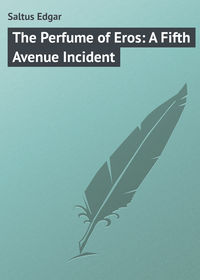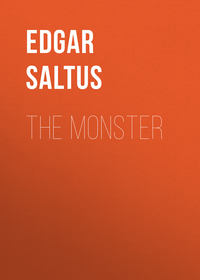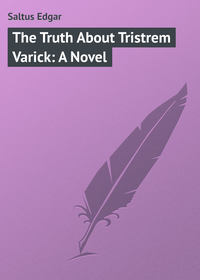 полная версия
полная версияBalzac
“The Waverley Novels,” he said,15 “resemble the Musée de la Rue des Petits-Augustins, in which each object, while magnificent in design, relates but to itself. Genius is complete only when to the faculty of creating it joins the power of coördinating its creations. The gifts of observation and description are in themselves insufficient; they must tend to a certain result. The Scotch bard was possessed of too clear a vision not to have understood this axiom, but its understanding assuredly came too late.” To this reflection the unity of the “Comédie Humaine” is probably due; and that it may not be objected that certain of its passages are unrelated to the others, it is well to note that Balzac died too suddenly to be able to connect the broken threads, which in any event are but few and far between.
But the task of rendering his work at once interesting and instructive was one of much greater difficulty than that of Scott’s, who drew his characters from former days, when every class of society was clearly defined, and clothed them from a wardrobe opulent with historical effects; whereas Balzac was obliged to offer in clear relief the almost imperceptible differences of the types of yesterday and to-day, that through an equality of fortune and education have destroyed the contrasts which once existed between the different degrees of the social order. Aided, however, by that peculiar intuition which never forsook him, he chose from among the physiognomies of his epoch an assortment of those fugitive traits which are imperceptible to the eyes of the vulgar; and in scrutinizing face after face, attentive to the changes of expression and inflections of voice, he was enabled to present a series of individualities which are far more realistic than those of his illustrious predecessor.
After displaying in the “Études de Mœurs” all the moral and physical transformations through which mankind passes, and after describing the social effects of their natural or civil positions, Balzac sought in the “Études Philosophiques” to demonstrate the causes of these effects; and while the first part of the “Comédie Humaine” contains but a series of individualities typified in the treatment of his subject, in the second part are to be found the same types individualized: as, for example, where in the “Études de Mœurs” Grandet is purely and simply a miser, avarice in the “Études Philosophiques” is incarnated in the person of Maître Cornélius, and the subject, like a sponge, gains in weight what it loses in breadth.
The “Études Philosophiques” is the fruit of analyzed comparisons of all the works which the philosophers of antiquity and the specialists of his day had produced on the intellect; and starting with the famous axiom of Jean Jacques Rousseau, that “l’homme qui pense est un animal dépravé,” – an idea which, as is well known, found its poetic interpretation in Byron’s “Manfred,” and its dramatic aspect in the “Faust” of Goethe, – Balzac proceeds to prove that ideas and sentiments are simply dissolvents of a greater or less activity; and taking as his premises the admitted fact that instincts violently excited by factitious or fortuitous circumstances produce unconsciousness and even death, and also that thought, when augmented by the transitory force of passion, may become a poison or a dagger, he infers, from the ravages produced by the intellect, that thought is the most active agent in the disorganization of man, and consequently of society. “Consider,” he says in “Louis Lambert,” “the difference between man who desires nothing and lives like a plant for a hundred years, and the creating artist who suffers early death. Where the sun is, there is thought and brevity of existence; where the cold is, there is torpor and longevity.” Then, after considering man as a simple organization, he brandishes the proposition that vitality decreases in exact proportion to the strength of desire and the dissipation of thought, and leads the reader, therewith, through the gradual development of his theory, which is first attacked in “La Peau de Chagrin.” This weird and fantastic production, in which skepticism and the supernatural join hands, represents the ravages of thought and the supreme expression of egotism as seared by the hot iron of civilization.
In “La Recherche de l’Absolu,” the theme is continued, but viewed in a broader and more comprehensive light. In “La Peau de Chagrin,” the individual is destroyed by the force of desire. In “La Recherche de l’Absolu,” the pursuit of an idea annihilates an entire family. The first is the world of pleasure, an epoch in itself; the second is the world of science, and glitters with brilliant hypotheses. In both instances, an idea, gradually strengthened, becomes a passion and a disorganizing force. In “L’Adieu,” happiness, exalted to the highest degree, becomes a destructive agency. In “Le Réquisitionnaire”, a mother is killed by the violence of maternal affection. In “El Verdugo,” a father is slain by his son that a title may be preserved. In “Le Drame au Bord de la Mer,” a son is slain by his father that an hereditary instinct may be destroyed. In “Maître Cornélius,” avarice kills the miser. In “Le Chef d’Œuvre Inconnu,” art kills the artist. In “Gambara,” the composer is crazed by his own conceptions. In “L’Enfant Maudit,” terror is the destroyer, and the subject treated herein finds a natural and logical sequence in the “Auberge Rouge.” In “Les Proscrits,” the sentiment of religion becomes the destroyer, and in “Séraphita” the same idea is more vividly presented. “César Birotteau,” an existence untroubled by misery, is, through sudden good fortune, cut off as by a scythe. In the “Église,” the agent is incredulity, but in “Louis Lambert” is to be found the most severe deduction from the fundamental proposition in that it represents the thinker killed by thought.
The destructive power of the mind and imagination, from the Neronian conflagration to the suicide of Castlereagh and Chatterton, the aphasia of Emerson, and the insanity of Tourgénieff, is too well known and too thoroughly understood to need further commentary in these pages; and in connection with this it need but be said that, while the attraction of gravity had been witnessed by countless generations, as it remained to Newton to formulate the obvious propositions of cause and effect, so in this branch of mental science, whose results have been patent since the beginning of history, a Balzac was necessary for the full elucidation of the subject, and for the proper presentation of the conclusions derived from the psycho-mental evidence of ages.
After having, in the “Études de Mœurs,” described society in every aspect, and demonstrated in the “Études Philosophiques” all the underlying causes of the general results, Balzac proposed in the third and last division of the “Comédie Humaine,” namely, in the “Études Analytiques,” to examine the principles upon which the first two rest.
This last division, however, is one of the few unfinished windows of his Aladdin’s palace, for, out of the six volumes which it was to contain, two only were written before death intervened. These two works, the “Physiologie du Mariage” and the “Petites Misères de la Vie Conjugale,” are a series of duos between husband and wife, augmented at times by the tenor notes of the amant. The first is dedicated to the reader, and contains the deceptions of the husband; the second, those of the wife. At once malicious and diabolically witty, these two books are as delicately analytical as the deductions of Leuwenhoeck and Swammerdam, and abound with that peculiar though refreshing condiment which is generally known as Gallic salt.
It is to be regretted that these two books, the first of which was published at the outset of the author’s career, and the second towards the close of his life, were not strengthened and augmented by the others with which he proposed to accompany them, and whose subjects and titles – namely, “Anatomie des Corps Enseignants,” “Pathologie de la Vie Sociale,” “Monographie de la Vertu,” “Dialogue Philosophique et Politique sur la Perfection du XIXe Siècle” – have alone descended to us; for this vein of literary treasure can never be profitably worked save by another Balzac or a modern Aristophanes.
It was in 1844 that Balzac said, “The first half of the present century will be found to have been greatly influenced by four men, – Napoleon, Cuvier, O’Connell, and myself. The first lived on the blood of Europe, the second espoused the globe, the third became the incarnation of an entire race, while I shall have carried a complete society in my brain.”
Though almost another half century has now elapsed since these words were uttered, it would seem that the influence which he was then conscious of exerting is even more vigorous than before. The characters which he painted formed, it is true, part of a Paris now dead and forgotten, but the types have survived, and the lessons which he deduced therefrom are as eminently instructive now as they were in the days when he wrote; and while, taking the world at large as the groundwork of his edifice, man was necessarily but the detail, he has, in his description thereof, painted him in every phase, – consequent and inconsequent, neither completely good nor completely vicious, logical at times, and sometimes great, but incessantly opposing his own interests to the laws of society in that gigantic struggle of customs and sentiments which is as inconsistent to-day as it was fifty years ago.
When the “fiat lux” was pronounced, and man completed, Balzac turned to his natural companion, and in his portraiture of woman not a single type is lacking. Herein he is unexcelled and unsurpassable. That which Euripides considered as the most terrible of all misfortunes, and De Maistre nothing but a beautiful animal, found its most graphic expression through him. As a faithful naturalist, he has, in descending the spiral of civilization, described and classified the femina simplex; but the ideal woman, sublime in her errors, magnificent in her devotion, and royal in her forgiveness, has found her geographer in him. His descriptions of Madame de Beauséant, the Duchesse de Langeais, Madame Firmiani, the Countess in “Colonel Chabert,” Madame Claës, Madame Jules, Madame de Montsauf, Béatrix, and Mademoiselle des Touches comprise woman almost in her entirety; they are landmarks in psychological study; and so true to nature are they that their appearance marked a new era in literature.
It is in these portraits that Balzac is most realistic; and while a few of the most admirable among them are sometimes erring, yet it will be admitted that womankind is not composed exclusively of angels; perfection is often dull, and a fault may be a virtue. By way of contrast, however, he has, in Eugénie Grandet, Madame Firmiani, Madame de la Chanterie, Marguerite Claës, Madame Jules, Agathe Rouget, Pierrette, Madame Hulot, and Ursule Mirouët, not only solved the difficult problem of rendering virtue interesting, but he has created in frames of impeccable beauty a series of irreproachable Madonnas.
His revelation of woman is completed in a special and parallel study of love. Love he considered the mainspring of humanity; without it, religion, history, romance, and art would be useless; and he has analyzed, dissected, and explained its every phase, hesitation, palpitation, and tenderness.
Beyond the scenic effects which he lent to passion, Balzac entered thoroughly into the specialties of trade and profession, and it seems almost incredible that one mind could have grappled with the details of the practice of law which are so admirably described in the “Contrat de Mariage,” in his portrait of Derville the lawyer, Peerquin the notary, and the proceedings in “César Birotteau,” while imagining such types as Vautrin, who dominated Paris from the depths of the galleys, or La Fille aux yeux d’or languishing in her octagonal boudoir.
As Bianchou he is alienist and physician; in Dr. Mirouët he is medium and mesmerist; he is a miser in Grandet and discounter in Gobseck; he is vicar at Tours and old maid at Issoudun. None better than he has described that class of fascinating scoundrels of which Rastignac is the type, nor painted more clearly the heralds of ennui and philosophers of satiety than he has done in De Marsay and Maxime de Trailles. In “Les Deux Poètes” he is printer and manufacturer of paper; in the “Cousin Pons” he presents the flower of an imagination intoxicated with the master paintings of great artists; while in the “Illusions Perdues” the journalist is dissected and the publisher decomposed.
In the veins of his characters there is not a drop of ink; they live, move, and have their being, and their eyelashes are as delicately finished as their epigrams.
Starting from the mud and vermin of Parisian by-ways, and ascending to the steps of the throne, Balzac garnered every possible type, no two of which are similar; each is original and all are profoundly human; and while the dregs of London are not further removed from the splendors of Teheran than is mother Nourrison from the Duc de Grandlieu, yet Balzac’s intuition divined the one as clearly as he described the other.
In his transitions and contrasts, however, there is as little abruptness as there is in the marriage of the blue of the skies with the green of a landscape; changes follow in orderly and natural sequence, and the mind of the reader is only confused at the multiplicity of his attainments, which present in turn houses and costumes, interiors and countries, intermingled with plot, science, religion, politics, agriculture, erudition, mysticism, and wit.
Balzac was also a delicious landscape painter, and his scenes from Brittany in “Les Chouans,” his landscapes of Touraine and particularly that of Vouvay in “La Femme de Trente Ans,” the grand sketch of Norway in “Séraphita,” that of the Mediterranean island in “La Duchesse de Langeais,” are cited by Davin as masterpieces of graphic description.
The resources of Balzac’s genius are perhaps as clearly exhibited in “Eugénie Grandet” as in any of his other works, and the appearance of this romance gave the keynote to the present Realistic school. “Eugénie Grandet” is the conquest of absolute truth in art. It is the drama applied to the most simple events of life; the fusion of the trivial and the sublime, the pathetic and the grotesque. It is a picture of life as it is, and the model of what a novel should be.
The motif here commenced is admirably continued in “Le Curé de Tours,” which contains none of those elements heretofore considered indispensable in the manufacture of fiction. From these pages love and marriage are banished; there is barely an event to be mentioned, yet the dumb, tortuous struggle between the two priests is at once clear cut and peculiarly vivid. Herein the most humble trivialities of the subject are elevated and dramatized, and to attentive eyes this book will perhaps contain the secret of Balzac’s superiority; for as no rôle is poor to a good actor, Balzac in this story demonstrates that nothing was small beneath his pen.
The interiors of Gerard Dow, with their vast chimneys lit by flickering flames, their polished floors, walls hung with tapestries, their sculptured cornices and quaint and curious furniture, their shadowed backgrounds and doors which seem about to open upon some mysterious room, are to be found in “La Recherche de l’Absolu,” in which the opulent detail of the Flemish school is equaled, if not surpassed. Here, as in “Eugénie Grandet,” the drama is formed of the fusion of the trivial and the sublime, and for the proper presentation of the subject he extracted from the past of chemistry its possibilities for the future.
This work, as is the case with almost all his others, contains evidence of the most obstinate researches; and in this respect it may be noted that the majority of his books are the result of patient labor and prolonged meditations.
“Ursule Mirouët,” one of his most chaste conceptions, is the fruit of exhaustive experiments in clairvoyance. “Séraphita” was born of the suggestions of a hundred works of the mystics. “César Birotteau” is a text-book on bankruptcy.
The production of “Gambara” and “Massimillia Doni” necessitated not only a thorough musical schooling, but vast operatic knowledge, and before attacking his subject Balzac engaged a violinist to saturate him with Rossini. “La Grande Bretèche” is the essence of the Causes Célèbres, and dowered French literature with a new shudder. The “Contrat de Mariage” is a code of legal finesse.
“Maître Cornélius,” which with the exception of “Catherine de Médicis” contains the only ghosts that he has evoked from the night of the past, is an attempt to rehabilitate Louis XI., and to refute the historical portion of “Quentin Durward.”
“Les Deux Proscrits” was the result of prolonged meditations on the works of Dante, while “La Dernière Incarnation de Vautrin” is a dictionary of prison slang.
But the works for which he cared the most and on which he expended the greatest amount of labor were “Louis Lambert” and “Le Médecin de Campagne.”
In “Louis Lambert,” he asks whether electricity is not the basis of the particular fluid from which ideas are derived, and proceeds thereupon to consider thought as a complete system similar to that of vegetation; and after analyzing the birth, life, or death of certain thoughts,16 he expresses the opinion that ideas and sentiments are endowed with physical properties, such as weight and movement; and after fortifying it with striking examples of expectation, fear, anger, and determination, he concludes that facts do not exist, that ideas alone endure, and that volition is a material force, similar to that of steam.
In spite of the amount of labor which a work of this kind necessitated, a still greater amount was expended on “Le Médecin de Campagne,” of which every line and every phrase was weighed, rewritten, and corrected again and again. In this work he attempted to grasp the simple beauty of the Scriptures, to surpass the “Vicar of Wakefield,” and to put the “Imitation of Christ” into action; but its pages were written above the level of the ordinary reader, and in spite of its profundity of thought it is perhaps the least known of all his writings.
The romance, however, which gained for him the greatest favor in the boudoirs of Europe was the “Mémoires de Deux Jeunes Mariées,” which is one of the few works in which happy and satisfied love has been successfully depicted. In Rousseau there was too much rhetoric, in Richardson too much pretension; Scott was hampered by English prudery, and is consequently chill as an icicle; the poets as a rule were too extravagant and too much engrossed in metaphors; and it remained to Balzac to describe the insensate fears and unreasoning jealousies of that passion of which many speak, but few have known.
The masterful handling of these widely contrasting subjects shows not only an equipment of profound penetration and power of observation, but also an erudition at once varied and luminous. His works are those of an anatomist from whom nothing escaped, a psychologist from whom nothing was hidden, and a realist who described all. Joined thereto was the gift of adjective: in this he is the Benvenuto Cellini of literature, for his words seem less like symbols of speech than awakeners of trains of thought.
His originality is entirely undisputed. It would not be a difficult task to point out the buried hands which modeled the grandiose figure of Hugo, and the tombs ransacked by Shakespeare are still open to inspection; but Balzac was totally without literary ancestry. The influence of Scott and Hoffmann, at that time enormous, possibly presided at the conception of some of his earlier works, and brought to them strength from the massiveness of the one and coloring from the unexpectedness of the other; they were perhaps the transitory models of a necessary apprenticeship, in which the masters were soon to be neglected and surpassed. Aside from this early schooling, Balzac is indebted to no one, – neither to the Greeks nor to the Romans, to the Italian school, to the Trouvères of feudal France nor to the Minnesingers of the Middle Ages; and even where Hoffmann is not, he at least is entirely modern and absolutely original; for the fantastic effects of the former were drawn from Micromegas, who had already extracted them from Cyrano de Bergerac, – a well into which, it may be noted, Voltaire himself has dipped; and in this respect, that it may not be objected that the “Contes Drolatiques” are but a continuation of Rabelais, Béroalde de Verville, and the Reine de Navarre, it is well to point out that where but the female was seen by these writers Balzac discovered the woman, a difference surely as great as between the bottle and the wine.
And here perhaps a word may be said in regard to the present Realistic school, of which he was the founder, and whose influence is daily becoming more noticeable and apparent.
The term present Realistic school is used advisedly; for though it was only about twenty-five or thirty years ago that realism began to be seriously considered, it is erroneous to suppose that it is of purely modern origin. For realism as expressed in literature is but the sentiment of the obvious and the true; and in the days when art was a splendid novelty, the first poets, as also the first painters, sought their inspirations directly from the primal source of all reality, – that is, from Nature herself.
Nature, therefore, is the mother of realism, artistically considered, and Homer was its first exponent; for not only was the actuality of his subject never neglected for the purely ideal, but it was also a first experience.
But the impressions produced by the real undergo in the mere transcription certain modifications, which are greater or less according to the organization of the exponent; and while some of the subject’s delicate aroma invariably escapes in its passage, however transitory, from brain to canvas, the proper conservation of what remains constitutes the work of art on whose opulence succeeding generations are nourished, and from which, in turn, other impressions are derived; and where the original exponent has artistically transcribed that which he has seen and felt, his followers express not that which reality suggests to them, but that which Nature suggested to him, and the original types of the one become the modified models of the others, until in descending the centuries reality becomes unrecognizable, and art and literature through constant copying of copies become at last enervated and meaningless.
When, therefore, the poetry of the Greeks was becoming entangled in the subtleties of versification, it received a fresh and vigorous impulsion from Theocritus, who, disregarding the set rules of his contemporaries, and returning to the direct observation of reality, expressed not only the ideal, as poetry should, but also Nature in her most humble and familiar details, and represented his Shepherdess as beautiful but unkempt, the odor of cattle about her, and with her hands hardened by contact with the horns of the steers. Pictures of the obvious and the true should represent, therefore, not only the beautiful but the repulsive, not only that which is unpleasant but that which is agreeable; and the Shepherdess of Theocritus, in her unkempt beauty, would be as untrue to nature had she not the odor of the cattle about her as are the patched and powdered bergères with which Watteau charmed the Pompadour.
Nature loves and abounds in contrasts, as witness the toad squatting beneath the rose bush; and while either may afford a separate study, yet the union of the two is necessary in a faithful picture of what actually exists.
When, therefore, Villon broke away from the stilted and flowery madrigals of the school of Charles d’Orléans, and sought anew for the simplicity of Nature, he was but continuing Theocritus and paving the way for Diderot and Rétif de la Bretonne. The current of opinion, however, was adverse to these writers, and it was not until the early part of the present century, when the Romantic school, with its vanguards led by Madame de Staël and Chateaubriand and with Victor Hugo for its subsequent chief, had succeeded after a terrible struggle in freeing themselves from the established rules and conventional phrasing of the classicists and had raised the standard of liberty in art, that many of the prejudices which the Academicians had engendered disappeared, and the ground, swept clean and clear, was prepared for the advent of a new teacher.











